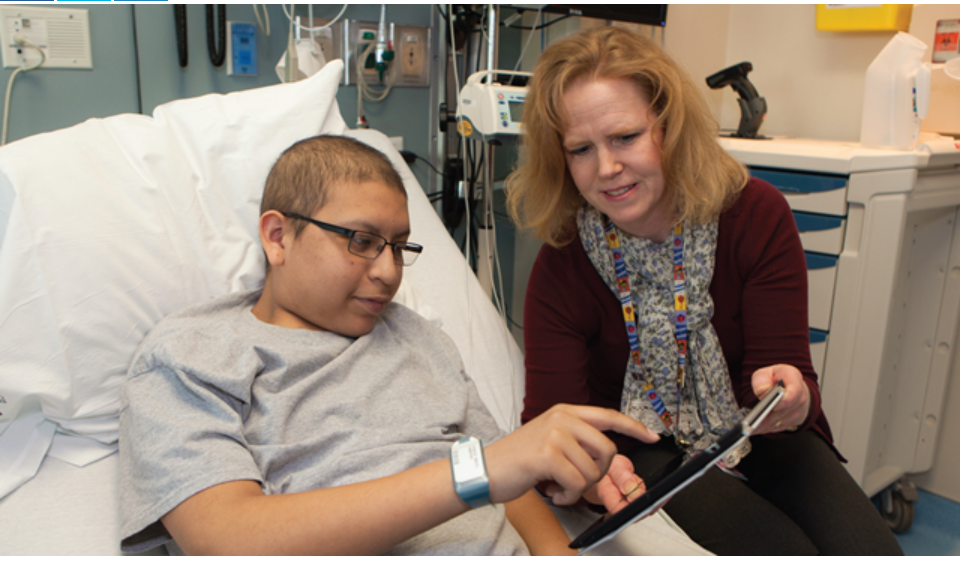A 13-year-old cancer patient is using an iPad application (app) to report cancer symptoms that a team of researchers from three children’s hospitals will then analyze. He drags and drops two symptoms onto the screen: nausea and pain. He then draws a relationship between the symptoms and labels the category “crap” to articulate in his own words how being nauseous and experiencing pain make him feel.
Leading the team of researchers is Lauri Linder, PhD, APRN, COPN, assistant professor with the University of Utah College of Nursing and clinical nurse specialist for the Cancer Transplant Center at Primary Children’s Hospital. Utilizing grant funds Linder received from Alex’s Lemonade Stand and St. Baldrick’s Foundation, the research team collaborated with Intermountain Healthcare’s Homer Warner Center for Informatics Research to develop the app.
The app, Computerized Symptom Capture Tool (CSCAT), is being used by adolescent and young adult cancer patients to create graphical images of relationships between symptoms they are experiencing and identify the priority symptom in each group based on their own perspective. “In past studies, we used to give patients paper and a pencil and ask them to circle their symptoms. Then we, as researchers, applied statistical methods to analyze the data,” says Linder.
“With C-SCAT, we empower the individual and give them the opportunity to tell us what symptoms they believe are related. What they believe makes certain symptoms better or worse. Our goal is to give the data to their provider and it becomes the basis for a conversation regarding what is happening with their symptoms.”
The underlying goal of the study, Consortium to Study Symptoms in Adolescents with Cancer, is to identify evaluate the feasibility and acceptability of the app. The overarching objective of the collaborative nature of the study is to advance pediatric oncology research. “Fortunately, in comparison with other forms of cancer, pediatric cancer is a rare condition overall. The challenge this presents for pediatric research is if we do the research individually, it is hard to do a meaningful study at our own institution,” Linder says. “By working collaboratively between institutions, we are able to extend the reach of pediatric oncology research, and hopefully, help more kids. We formed the consortium with this in mind. ” After recruiting adolescents, a member on the team at Seattle Children’s Hospital brought in additional funds in order to recruit a young adult sample of 19 to 29-year-olds.
Through paper and poster presentations at professional meetings, the research team has received positive feedback from clinicians, including interest in seeing the C-SCAT used in clinical settings. It already has a strong fan-base among study participants: Eighty-three percent of patients indicated they prefer reporting the self-study on a computer than on paper. (One participant gave the latter the category of “homework” to describe how it makes her feel.) And there have been other surprise benefits, such as the report from a 15-year-old girl suffering from neuropathy in her fingers that using the touch screen was more forgiving on her fingertips than writing with a pencil. For Linder, symptom management is at the heart of nursing and a natural outflow of her 24 years in clinical practice. “My clinical questions come out of my practice experience,” she says. “And the underlying goal for me always is to identify elements of caring for kids that we as nurses can own and improve.’”
Katie Schrier
Katie Schrier is the former Communications Manager for the College of Nursing.
